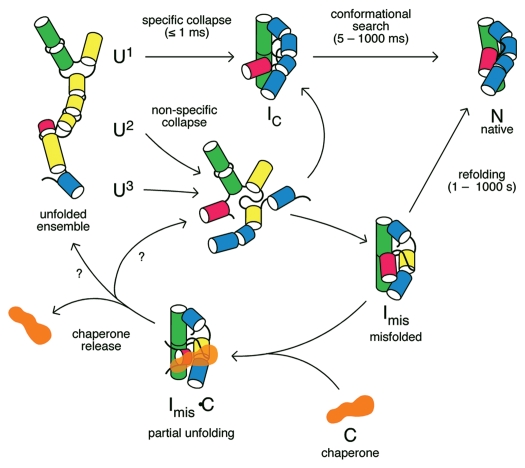Figure 1.
RNA folding pathways and refolding by chaperones. In the absence of chaperones (top), the initial collapse transition produces an ensemble of compact intermediates (IC) that rearrange to the native structure (N). Because the unfolded RNA contains a mixture of structures, including non-native base pairs (yellow), different subpopulations (U1, U2, U3) fold through different pathways (reviewed in ref. 134). Non-specific collapse transitions lead to kinetically trapped misfolded intermediates (Imis). Chaperone proteins (C) bind and destabilize RNA folding intermediates, releasing partially unfolded RNAs that can fold again. The structure of the RNA immediately after chaperone release is unknown (question marks).

